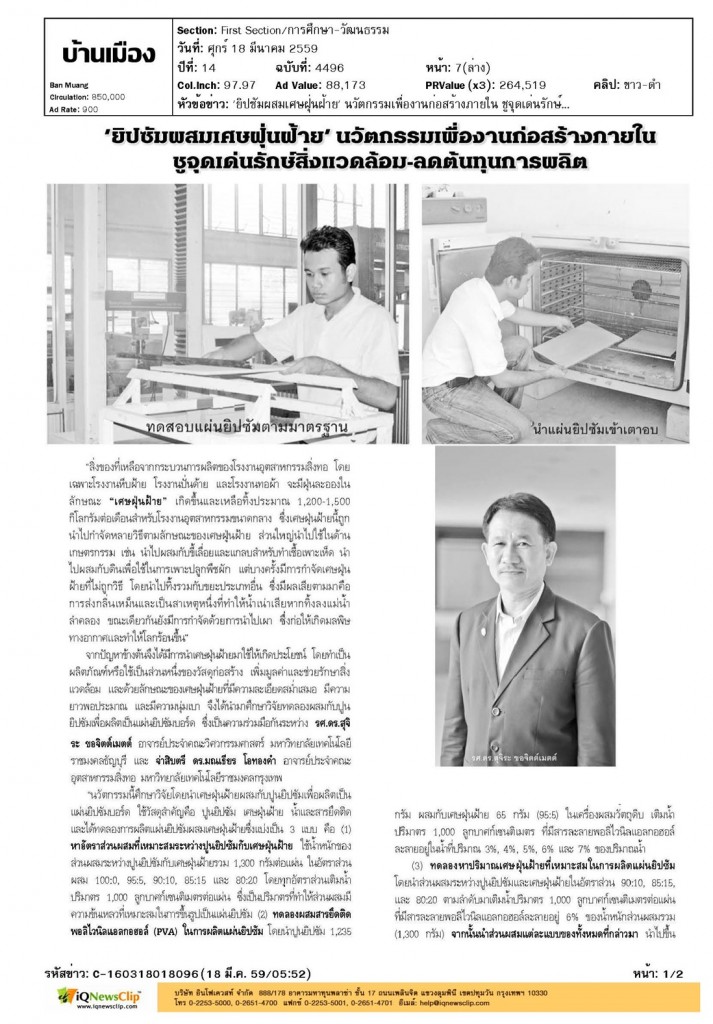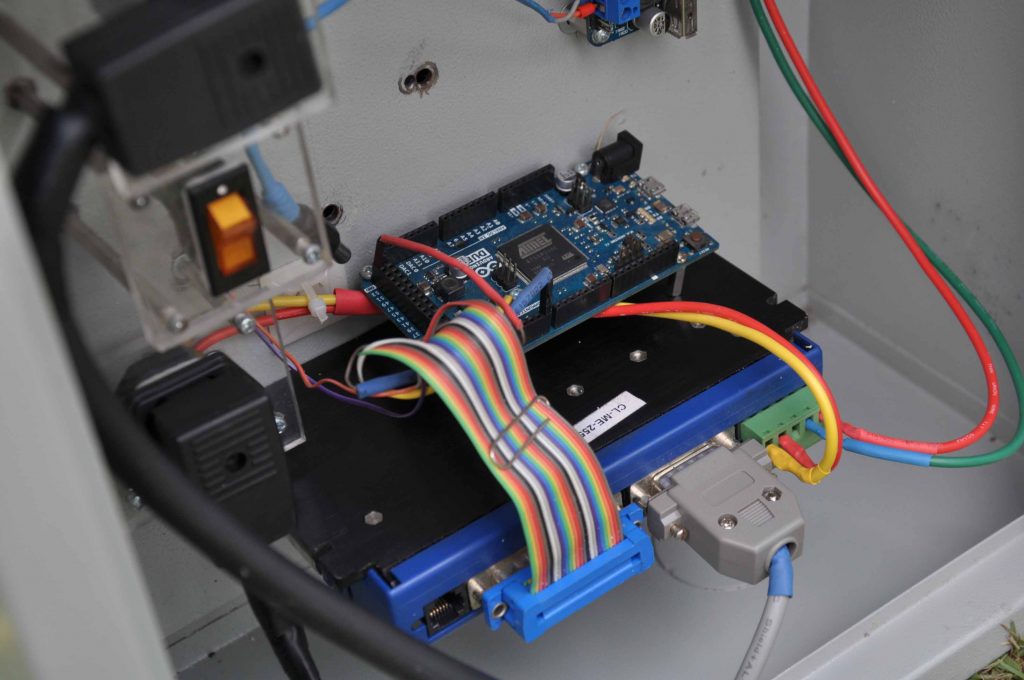
Professors from RMUTT’s Department of Textiles and Garments Develops Natural Fibers from Water Hyacinth
15/09/2016
Gypsum mixed with Cotton Dust
15/09/2016
Using renewable energy is another way to reduce energy consumption. Currently, there has been research and development about solar energy, a type of renewable energy that has gained extensive interest. Mr. Thonsit Wechaboonsuk, Mr. Chatkamol Jamjumraj, and Mr. Ratthanin Thongcharoenchaikit, three fourth year students from the Department of Mechanical Engineering, Faculty of Engineering at RMUTT created a solar tracking system for solar cell panels by using a micro-controller, with consultation from Dr. Manusak Janthong, permanent professor of the Department of Mechanical Engineering.
The three students said that they saw the benefits and significance of solar energy as it is clean and does not produce any reactions that lead to pollution. Hence, it is used to generate electricity, as solar cells can be transformed into electrical energy directly and very efficiently.
There are two important methods to transform solar energy into electrical energy, which is by directly transforming solar energy into electrical energy by using solar cells to produce electrical energy from the sun (Photovoltaic), which can generate electricity without moving, has no noise, and does not create pollution. Another method is a system that collects energy (Concentrate) from the sun, in order to generate heat. The system collects energy by using mirrors or a reflective material, and rotates according to the sunlight, in order for the sunlight to reflect and be sent to a sensor, which will transform it into high temperature energy.
With today’s technology, solar cell panels have been used to convert solar energy into electrical energy, but due to the sun constantly moving, energy cannot be efficiently converted. Therefore, the three students thought of a way to combine their ideas with existing knowledge and skills, in order to develop a solar tracking system by using a micro-controller to control the position solar cell panels can receive solar energy. Equations of sun movement, along with various technologies currently available were used to create a program to control the position of solar cell panels, making it possible to efficiently use solar energy as the solar cell panels will be positioned to receive the maximum amount of solar energy at all times.
The micro-controller used with the solar tracking system acts as a processor and controls how the solar tracking system is operated from calculations from SPA mathematical algorithms, in order to find the sun’s position. Then, the solar system’s angle of rotation is calculated to ensure that the solar cell panels are able to receive the maximum amount of sunlight. The structure of the solar tracking system was designed to have one mobile axis, using a DC servomotor and gear to move the structure 360 degrees. Two tests were conducted on the solar tracking system, with the first test being finding any mistakes the system’s rotation when following the sun. Findings yielded that there was an average error of 2.07 degrees. Furthermore, the second test compared the amount of energy increase between solar cells that have been installed on the solar tracking system and solar cells that were permanently mounted. Findings revealed that solar cells that have been installed on the solar tracking system produced 58.37% more energy than solar cells that were permanently mounted.
The Solar tracking system for solar cell panels by using a micro-controller, solar energy, and clean renewable energy creates sustainable energy and is considered an idea that is practical and suitable for solar farms. Those that are interested can ask for more information by contacting the Department of Mechanical Engineering at 02-549-3430.








